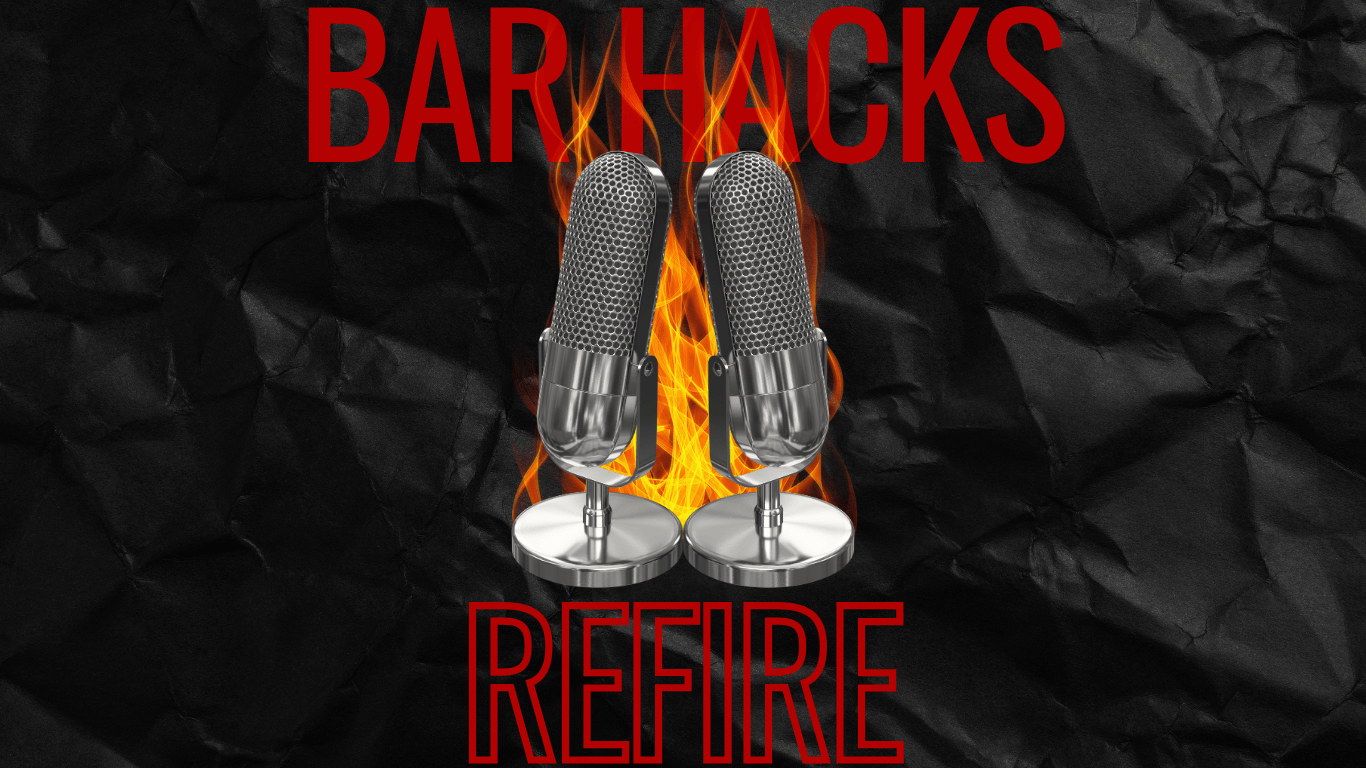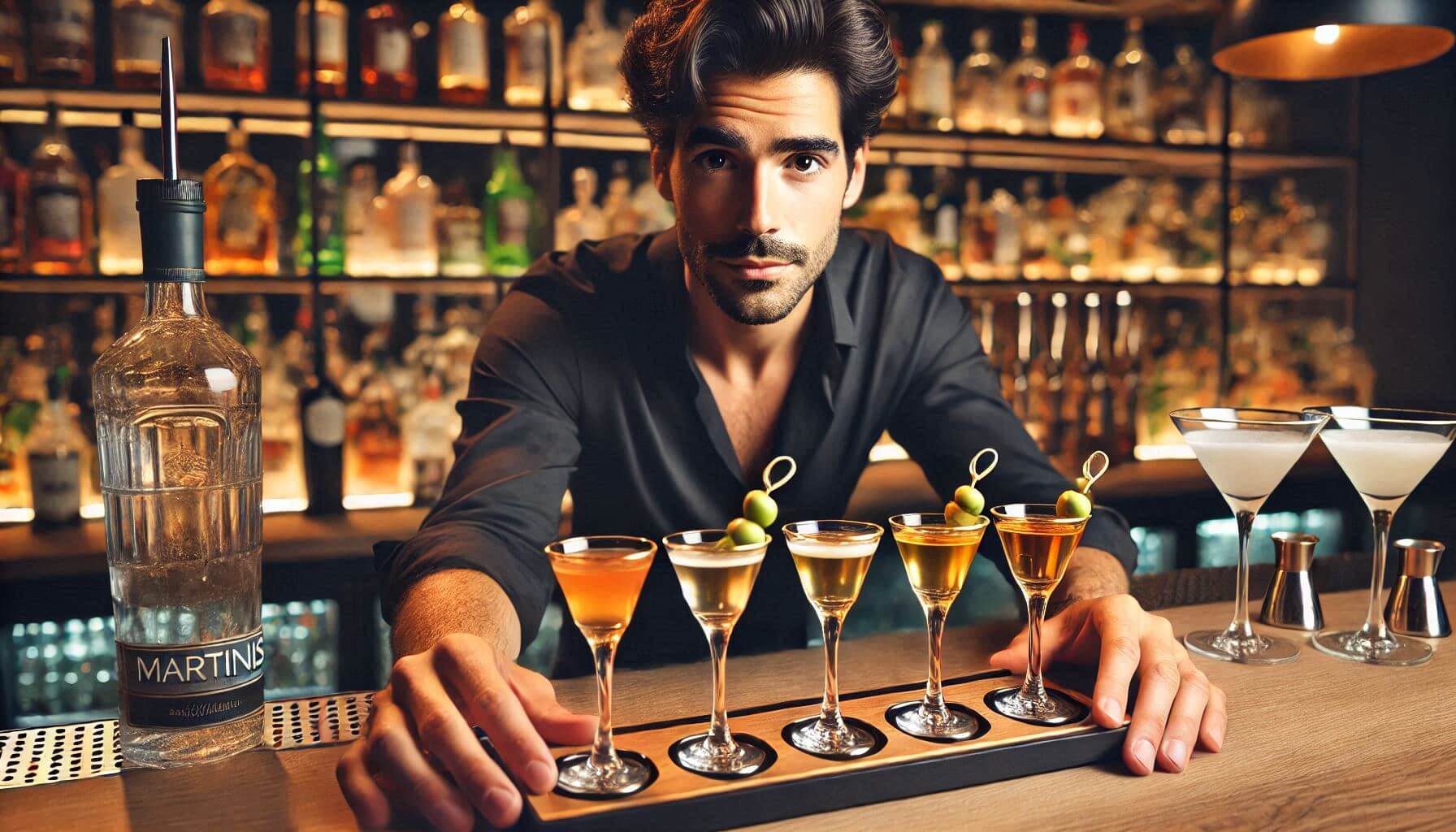Why Your Business Will Fail Without Strategic Clarity
by Doug Radkey

Success in the hospitality industry—whether operating a bar, restaurant, or hotel—requires more than just passion, ambition, and a quality concept.
In addition to all of the above, success demands strategic clarity. Put simply, this is the ability to see the big picture while understanding the smallest details possible of how your business will operate, scale, and, most importantly, drive profits.
Without this clarity, even the most creative and exciting ideas face a high risk of failure.
In summary, without clarity, you’re just reacting; with it, you’re leading.
Let’s explore the definition of strategic clarity, why it’s a non-negotiable, and why your hospitality business cannot succeed without each of these strategic playbooks: feasibility study, conceptual playbook, prototype playbook, brand strategy playbook, tech-stack playbook, marketing playbook, financial playbook, and business plan playbook.
What is Strategic Clarity?
Strategic clarity goes far beyond writing a mission statement or setting sales goals.
Strategic clarity is the alignment of vision, goals, and actionable steps required to move a business from idea to concept to sustainable success. It’s about building a solid foundation that guides every single decision; from idea, to concept, to hiring staff, to launching and everything in-between.
Strategic clarity is the DNA of your business.
In the hospitality industry, strategic clarity ensures that every decision is cohesive and aligned with your target audience, operational capabilities, and long-term goals. Strategic clarity eliminates guesswork, reduces risk, and increases your odds of building a highly profitable business.
Why is Strategic Clarity a Must?
Without strategic clarity, businesses are left vulnerable to disjointed efforts, misaligned goals, and reactive decision making.
These issues not only waste time and resources but can also alienate your guests, frustrate your employees, and diminish your levels of profitability.
Now, let’s dive into why strategic clarity—and each of the eight key playbooks—are non-negotiable for a winning hospitality business.
1. Feasibility Study: The Foundation of Success
Why You Need It
A feasibility study lays the groundwork for strategic clarity by determining whether your bar, restaurant, or hotel concept can succeed in your target market.
This crucial study evaluates market potential, competitive landscape, and operational logistics, ensuring you make informed decisions before making major financial commitments, or signing a lease.
Without It, Your Business Will Fail Due To:
- Lack of Market Insight: Skipping this step leaves you guessing about TAM (Total Addressable Market), SAM (Serviceable Addressable Market), and SOM (Serviceable Obtainable Market), risking a misaligned business model and wasted resources.
- Poor Location Choices: A feasibility study helps you identify the optimal neighborhood, property size, site requirements, and development budgets for a variety of scenarios, saving you from costly real estate mistakes.
- Data-Driven Decisions: This study offers industry trends, technical specs, and competitor analysis, ensuring your planning is backed by actionable data.
-
- Example: Consider a boutique hotel targeting luxury travelers. A feasibility study explores guest demographics and psychographics, seasonal fluctuations, spending behaviors, and the region’s existing upscale offerings. This data shapes future pricing strategies, internal programming selection, operational requirements, and marketing efforts, turning assumptions into calculated strategies.
2. Conceptual Playbook: Your Vision on Paper
Why You Need It
The conceptual playbook translates your vision into a strategic framework, defining how your brand comes to life through design, experience, and operations.
This playbook aligns creative and functional elements into a unified, market-ready concept.
Without It, Your Business Will Fail Due To:
- Lack of Clear Direction: Without precise definitions for design, fixtures, furniture, equipment, uniforms, menus, and guest experiences, your business risks becoming a fragmented idea, leaving both guests and staff unclear about the brand’s identity.
- Team Misalignment: You and your shareholders, support team, development team, and employees need a clear understanding of your concept to execute the vision, and deliver consistent experiences.
- Failure to Stand Out: A distinct concept differentiates you in a saturated market, helping carve out a memorable niche. Let’s take a look at two sample scenarios:
-
- Restaurant Examples
- A Restaurant Without a Conceptual Playbook: Generic tables and chairs, mismatched menus, and a lack of on-brand marketing leave little impression.
- A Restaurant with a Conceptual Playbook: A coastal-inspired bistro with subtle and authentic sea-themed décor, locally sourced seafood menus, and immersive guest experiences creates a more lasting impact, and nurtures guest loyalty and repeat visits.
- Hotel Examples
- A Hotel Without a Conceptual Playbook: Standard rooms, impersonal service, and forgettable interiors offer no unique appeal.
- A Hotel with a Conceptual Playbook: A retro yet modern boutique hotel showcasing local craftsmanship, personalized service, and a curated lobby café makes every stay an unforgettable one.
- Restaurant Examples
By defining your vision clearly and cohesively, a conceptual playbook transforms your business idea into an operational reality with market differentiation and lasting success.
3. Prototype Playbook: Testing and Refining
Why You Need It
The prototype playbook enables precise testing, refining, and scaling of your concept before making full-scale investments.
This playbook minimizes costly guesswork, instead providing a clear path from design to operational implementation.
Without It, Your Business Will Fail Due To:
- Uncontrolled Budgets: Without defined prototypes, development costs can spiral due to unexpected adjustments in design, layout, or FFE (Fixtures, Furniture, Equipment) integration.
-
- Examples
- A Bar Without a Prototype Playbook: Custom bar counters are ordered without consideration for staff flow, causing expensive retrofits.
- A Bar with a Prototype Playbook: Space-optimized bar counters with exact dimensions ensure smooth service operations, and controlled costs.
- Examples
- Resource Waste: Testing workflows, layouts, and service models in a prototype phase reduces inefficiencies and operational bottlenecks.
-
- Examples
- A Restaurant Without a Prototype Playbook: Kitchen layout errors slow service, causing delays and increasing labor costs.
- A Restaurant with a Prototype Playbook: Pre-tested kitchen zones ensure efficient service, reducing wait times and boosting profitability.
- Examples
- Limited Scalability: A well-developed prototype ensures your concept can adapt to various property sizes, layouts, and markets, making expansion more feasible.
Testing, refining, and scaling concepts through a prototype playbook ensures businesses can develop precise start-up budgets while reducing risk, optimizing resources, and positioning themselves for sustainable, scalable growth.
4. Brand Strategy Playbook: Building Your Identity
Why You Need It
The brand strategy playbook establishes your business’ core identity, aligning every guest interaction with your values, messaging, and market positioning.
It ensures that your brand resonates with the right audience while creating lasting, emotional connections.
Without It, Your Business Will Fail Due to:
- Lack of Clear Identity: A poorly defined brand confuses potential guests, diminishing credibility and loyalty.
-
- Examples
- A Bar Without a Brand Identity: Random décor, inconsistent service styles, and a generic menu fail to create memorable experiences, leaving guests disengaged.
- A Bar with a Brand Identity: A retro-inspired cocktail lounge with mid-century modern décor, tailored music playlists, and vintage-inspired cocktails creates an immersive guest experience.
- Examples
- Failure to Attract Guests: A distinct brand aligns with target market values, sparking curiosity, and driving foot traffic.
-
- Examples
- A Bar Without a Brand Strategy: A new bar opens with no thematic focus, minimal marketing, and a generic online presence. Potential guests pass by without interest.
- A Bar with a Brand Strategy: A speakeasy-themed bar launches with curated social media content, influencer collaborations, and press coverage, creating buzz and becoming the city’s hottest new spot.
- Examples
- Ineffective Marketing Campaigns: Marketing without a brand strategy leads to disjointed campaigns that fail to engage or convert potential guests.
-
- Examples
- A Marketing Campaign Without a Brand Strategy: A basic ad promoting generic happy hour specials attracts price-sensitive guests but creates no brand loyalty.
- A Campaign with a Brand Strategy: A cinematic video showcasing mixologists crafting signature drinks boosts brand engagement, and drives repeat visits.
- Examples
Your brand strategy playbook is more than just a logo. It ensures every detail, from service tone to visual identity, works in harmony to position your business as unforgettable and irreplaceable.
5. Tech-Stack Playbook: Leveraging Technology
Why You Need It
The tech-stack playbook ensures your business leverages cutting-edge tools and systems to streamline operations, elevate guest experiences, and unlock valuable data-driven insights.
In today’s digital-first landscape, technology is no longer optional—it’s another non-negotiable.
Without It, Your Business Will Fail Due To:
- Operational Inefficiencies Causing Chaos: Without integrated technology, processes break down, leading to delays, wasted resources, and unhappy guests. The right tech stack synchronizes workflows. Think reservation systems that align with table turnover rates, or POS systems that monitor real-time inventory levels, preventing over-ordering.
-
- Examples
- Inefficient Operations: A restaurant using outdated manual inventory processes faces unexpected stockouts, leading to missed sales and guest frustration.
- Efficient Operations with Tech: A cloud-based POS with inventory management ensures automatic reordering alerts and prevents shortages during peak hours.
- Examples
- Failure to Meet the Guest Demand for Seamless Tech-Enhanced Experiences: Today’s guests expect convenience. From contactless payments to personalized services, technology bridges the gap between expectations and delivery.
-
- Examples
- For Restaurants: Tableside ordering tablets reduce wait times, while QR code menus provide instant access to specials and allergen information.
- For Hotels: Mobile check-ins, room key apps, and smart room controls create frictionless stays, differentiating your property immediately.
- Examples
- Missed Opportunities: Without the right technology, you forfeit valuable analytics that could shape your business. Actionable data reveals trends, such as best-selling dishes, total guest revenue management, or high-margin offerings, enabling smarter decisions.
By aligning the right systems with your business model, you can deliver efficiency, meet evolving guest expectations, and mine insights to fuel your growth.
The question isn’t whether you need technology, it’s whether you’re leveraging it effectively to gain a competitive edge.
6. Marketing Playbook: Reaching Your Audience
Why You Need It
Your marketing playbook is the roadmap to attracting, engaging, and converting guests through well-orchestrated campaigns across digital, social, and traditional channels.
This playbook defines your unique voice, message, and tactics that resonate with your target market.
Without It, Your Business Will Fail Because:
- You’re Invisible to Guests: The “build it, and they will come” approach is a myth. A strong marketing playbook ensures visibility through SEO, social media, PR campaigns, and community partnerships, positioning your business in front of the right people at the right time.
-
- Examples
- A new bar without a marketing plan might rely solely on word of mouth, leading to slow growth, and unpredictable traffic.
- A bar with a marketing playbook uses social media promotions, influencer partnerships, and a launch event to create buzz, providing immediate brand awareness, and generating foot traffic.
- Examples
- You Waste Money on Ineffective Campaigns: A marketing playbook defines objectives, key performance indicators (KPIs), and actionable steps, ensuring every marketing dollar spent delivers a measurable return. Let’s look at a sample result:
-
- Sample of Measurable Results: A bar runs a social media campaign promoting a new seasonal cocktail menu.
- Goal: Increase weekend reservations.
- Campaign Action: Targeted social ads with a direct booking link.
- Result: A 35-percent increase in table bookings within 30 days, tracked through specified promo codes, POS integration, and follow-up metrics through brands such as Ovation.
- Sample of Measurable Results: A bar runs a social media campaign promoting a new seasonal cocktail menu.
- You Can’t Build Loyalty: Consistent messaging and guest engagement cultivates trust, fostering repeat visits and long-term brand loyalty.
-
- Example
- A restaurant with a clear marketing strategy shares behind-the-scenes content regularly, offers loyalty rewards, and sends personalized email offers, keeping the brand top of mind among their most valuable guests.
- Example
A well-defined marketing playbook is not just a promotional tool, it’s the engine that drives visibility, guest engagement, and long-term loyalty. It ensures your brand stays relevant, compelling, and profitable in a competitive landscape.
7. Financial Playbook: Managing Money Wisely
Why You Need It
The financial playbook is your blueprint for sustainable profitability, guiding budgeting, forecasting, and cash flow management. It transforms your concept from an idea into a financially sound reality.
Without It, Your Business Will Fail Because:
- You Won’t Secure Funding: Lenders and investors need detailed projections. A financial playbook builds trust by showing profitability scenarios, ROI timelines, and realistic financial goals.
-
- Sample Insight: A hospitality group secures $2M USD for a new cocktail bar by presenting a robust financial playbook that presents realistic five-year forecasts, start-up budgets, and more.
- You’ll Run Out of Cash: Poor financial planning is a top cause of failure. Without a playbook, unexpected expenses or under-funding can derail your project long before you look to open your doors.
-
- Example: A boutique hotel underestimates renovation costs due to lack of a prototype and detailed budgets. They deplete funds before opening, delaying launch, reducing lender trust, and increasing their debt load before the first booking.
- You’ll Have No Financial Control: Comprehensive playbooks monitor expenses, optimize pricing, and maximize profitability with tailored start-up projections, investment scenarios, mock labor schedules, day-part/occupancy strategies, P&L statements, cash-flow forecasts, cost-channel analysis, modern revenue management strategies, and contingency plans.
-
- Real-World Impact: A midscale hotel uses financial modeling to adjust day-part strategies, increasing off-peak revenue by 40 percent, and reducing operational costs by 15 percent.
- Real-World Impact: A midscale hotel uses financial modeling to adjust day-part strategies, increasing off-peak revenue by 40 percent, and reducing operational costs by 15 percent.
A financial playbook isn’t just numbers. This playbook is a strategic tool ensuring your business remains solvent, scalable, and investor ready from day one. It prevents costly surprises, and drives long-term profitability through proactive financial control.
8. Business Plan Playbook: Day-to-Day Operations
The business plan playbook serves as the operational backbone of your hospitality business, guiding daily activities from front-of-house procedures to back-end management.
Contrary to common belief, it should be the last playbook developed. The business plan playbook should be completed only after assessing the feasibility of your idea, and defining your concept, prototype, brand, tech stack, financials, and marketing strategy. Taking this approach ensures every operational detail is driven by data, and aligned strategically.
Without It, Your Business Will Fail Because:
- Your Team Lacks Structure: Employees need clear roles, expectations, and procedures. Implementing Six Sigma and Kaizen methodologies within your playbook fosters a culture of continuous improvement and operational efficiency.
-
- Example: A bar without defined staff roles experiences high turnover due to confusion over responsibilities. After adopting a playbook with structured roles and SOPs, turnover drops by over 55 percent.
- You Can’t Deliver Consistency: Inconsistent operations harm the guest experience, and lead to negative reviews. A comprehensive playbook ensures processes are repeatable, scalable, and centered around guest satisfaction.
-
- Example: A boutique hotel improves its guest satisfaction score by over 70 percent after implementing SOP-driven check-in/out procedures, housekeeping standards, and personalized guest touchpoints.
- You Struggle to Adapt: An operations playbook allows businesses to pivot quickly when challenges arise. Whether adapting to changing guest expectations or responding to market shifts, your team will have a clear, proactive roadmap.
-
- Example: A restaurant navigates supply chain disruptions by referencing its contingency plan within its business playbook, securing local supplier contracts that reduce delays.
Unlike static business plans, a business plan playbook evolves with your business. It’s a dynamic, action-oriented guide that adapts to market changes, ensuring your business remains agile, efficient, and competitive. With a playbook, you don’t just plan—you execute with precision and purpose.
The Ripple Effect of Strategic Clarity
Strategic clarity doesn’t just enhance isolated parts of your hospitality business—it creates a synchronized, efficient, and scalable operation.
Master the eight essential playbooks to not merely start, stabilize, or scale a business but to build a legacy primed for adaptability, growth, and industry leadership.
Imagine this Impact
Picture presenting a fully developed suite of playbooks to investors, landlords, or partners. You’ll exude confidence, backed by precise strategies in which they can place their trust.
This comprehensive approach distinguishes you from businesses relying on generic, templated, or AI-generated plans. (Yes, banks and investors can tell when a business plan has been generated by artificial intelligence.)
Don’t Leave Success to Chance
Success in hospitality is both challenging and rewarding. Without strategic clarity, even the best ideas risk failure.
This framework positions your business within the top 20 percent that surpass the five-year survival mark.
Why This Matters
Without strategic clarity, you risk being in the 80 percent of operators that fail. Why do that to yourself?
The industry’s high failure rate stems entirely from a lack of well-defined strategy. At KRG Hospitality, we specialize in crafting bespoke playbooks that drive clarity, confidence, empowerment, and freedom.
Want to learn more? Join our next 60-Minute Start-Up Masterclass, or contact us today for personalized consulting.
Take action now—success doesn’t happen by accident.
Image: Canva

Looking to Start, Stabilize, or Scale? Book Below to Setup a 60-Minute Result-Driven Impact Session.








